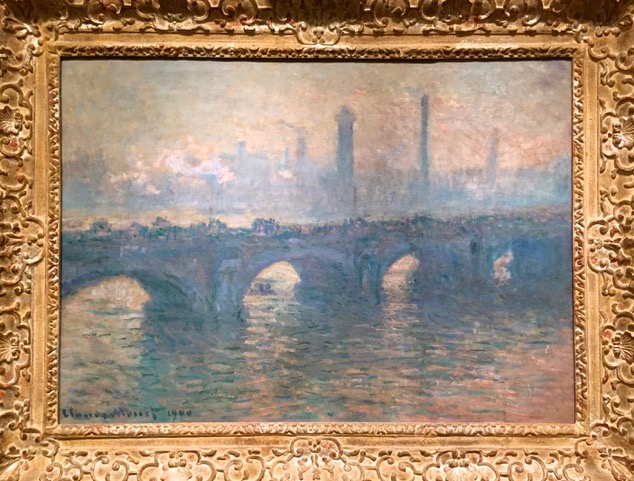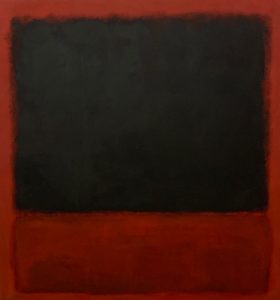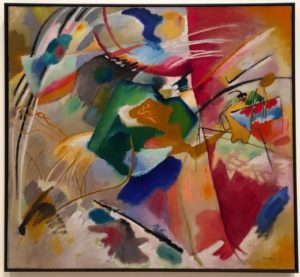Beauty is in the eye of the Beholder
OVERUSED CLICHÉ OR THE TRUE ESSENCE OF ART?
BY RICHARD REITZELL
In 1878, Margaret Wolff Hungerford first penned this simple phrase in her book Molly Bawn and captured an incredibly complicated, deeply nuanced thought: the idea that beauty is subjective and open to multiple meanings and a variety of interpretations. One commonality may be the idea that beauty impacts us in a manner that captivates, catches our eye, makes a connection, and intrigues us in profound ways, both emotionally and analytically. It entices us to take another look, yet also compels us to linger for a moment longer, absorb what we are seeing and feeling, and enjoy the full experience. Arguably, there is no more fertile field for beauty than in the world of art.

HISTORICALLY CAPTURING BEAUTY: FEMALE SUBJECT MATTER
When thinking of beauty in traditional Western art, one’s mind may quickly jump to the lush portraits of John Singer Sargent’s elite ladies of society. These often- attractive wives of affluent patrons were composed in rich interior settings and featured lustrous fabrics as well as opulent clothing that conveyed a sense of style and wealth. The work of Southern California impressionist, Guy Rose, exemplifies a suppler characteristic of beauty: the casual, yet stylish outdoor portraits of women often draped in kimonos or soft-colored garb. Portraying a very different form of beauty are the earthy, yet graceful magnificence of Jean-Francois Millet’s hardworking peasants toiling in the fields of the French countryside or the fresh innocence of the youthful waifs that were popular subjects in the paintings of William Adolphe Bouguereau. Bouguereau’s young peasants conveyed both the beauty and charm of youthful innocence and hope.
MOTHER NATURE, THE ORIGINAL BEAUTY
An art genre exquisitely able to convey the beauty of our world is one the oldest forms of art: the landscape. For centuries, artists have found a way to capture and present the essential beauty of the natural world around us. Some outstanding early American artists such as Franz Bierstadt, Thomas Hill, and Thomas Moran enthralled their audiences with the beauty of the American West through landscape paintings, serving as inspiration to “Go West”. More marvelous examples of the landscape genre include Jules Tavernier, who explored the eerie, ethereal fire of volcanoes and William Mallord Turner, who expressed the beauty of European fields as well as cities gloriously bathed in the brilliant luminescence of sunlight. Others, like William Ritschel and Franz Bischoff, showcased the beauty of the California coast in their canvases depicting moody seas, turbulent waves, and cool, drifting coastal fog.


A familiar yet enduring representation of beauty is the image of a flower. One of nature’s true joys, a flower when captured by an artist, creates a wondrous and lasting element of visual pleasure within the viewer’s mind. Interpretations can be soft and graceful as in Georgia O’Keefe’s sensual works or soft, wispy, and ethereal pastels seen in Pierre-Auguste Renoir’s pieces.
Floral depictions can also portray the ultra- realistic style of early Dutch masters like Jan van Huysum or be bold and dynamic as seen with southwestern artist Ed Mell. While vastly different in style, all speak equally to the inherent beauty of the subject.
THE BEAUTY OF THE ARTIST’S EYE
Talented artists are able to suggest the subtle and nuanced beauty of a passing moment in an ordinary, everyday subject. Claude Monet’s serial paintings that captured the profound and beautiful changes in lighting and effects on color made masterpieces of relatively mundane subjects such as haystacks in a field, the weathered face of an ancient cathedral in Rouen, or the amazing atmospheric interpretations of London’s bridges in a soupy shroud of industrial fog. Truly great artists are uniquely able to express the beauty that others may find hard to convey. While we have all gazed into the night sky full of stars with the comforting glow of the moon, Vincent van Gogh found a way to bring the beauty of the moment alive. His famous “Starry Night” paintings—one a nocturnal scene of the bend in the Rhone River at Arles in France and the other a nighttime scene of the fields near St. Remy—are among his most beloved works. With van Gogh’s agitated state and in his own artistic imagination, the nighttime sky that we have all experienced and perhaps taken for granted becomes breathtaking in an unexpectedly beautiful explosion of kaleidoscopic color and pulsating orbs.

THE BEAUTY OF YOUTHFUL INNOCENCE

An expressive and uplifting form of beauty is the celebration of the genuine joy and magic of childhood. The portraits of early California impressionist, Jean Mannheim, captured the beauty, pure innocence, and joyful expression of a child engaging in a favorite activity, which delights the eye and warms the heart. Similarly, the soft pastels Mary Cassatt utilizes in her work depicts the tender bond between a mother and child in a quiet moment of contemplation and togetherness, which speaks a universal language of beautiful maternal love. In a different vein, Norman Rockwell gained wide popularity for his warm portrayals of the nostalgia-tinged beauty of growing up in a simpler time.
THE UNCONVENTIONAL
Even Andy Warhol, the famous pop art artist, saw beauty in the world around him. The renowned artist made his mark on the world with his iconic representations of the everyday “beauty” in common items. Even simple objects like soup cans became infused with aesthetic. In Warhol’s 1975 “Ladies and Gentlemen”, the series found and celebrated the beauty in a quirky mix of transvestites who were outcasts of conventional society. In his replicative series of a famous Marilyn Monroe promotional image, Warhol simultaneously celebrated and skewered celebrity beauty in his multi-image diptychs while also illustrating the transient and fading nature of superficial beauty. Ever so relevant in today’s turbulent world, Jean Michael Basquiat’s powerful play of color and text explored deep commentaries on societal issues, all while blending together in a way that is visually striking. Here, beauty is found in the art’s message over the literal brushstrokes of representation.
THE LIMITLESS BEAUTY IN THE BRUSHES OF ARTISTS
Beyond the scope of the topics and artists highlighted in this essay, there is a near limitless range of amazing beauty expressed in art. Many other examples flourish: the chromatic conversations of Robert and Sonia Delaunay and Stanton Macdonald-Wright to the orderly grids of Piet Mondrian and the mesmerizing color fields of Marc Rothko. The rhythmic chaos of Jackson Pollock, the colorfully abstract visions of Wassily Kandinsky, the geometric simplicity of Kazimir Malevich’s suprematist style, and the dimensional complexities of Robert Rauschenberg’s combines shows how unbound beauty is to any one definition; these visual experiences demonstrate that beauty is the very essence of art.
How art catches our eye, encourages us to look and linger, and how it captivates our mind and soul occurs differently within each of us. This enduring yet intimate appreciation of art allows us to bring our own personal interpretation to the abundant beauty around us, proving the age-old adage: “Beauty is in the Eye of the Beholder.”
Above left: Marc Rothko, Red over Black on Red, Center Pompidou
Above right: Wassily Kandinsky, Painting with Green Center, Art Institute of Chicago
RICHARD REITZELL is an avid art collector and author of From a Versatile Brush the Life and Art of Jean Mannheim. He is a member of the CMATO Board of Directors.


